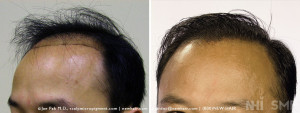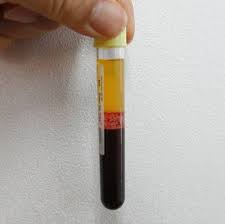This is a note I sent to a patient I saw today.
You have had previous hair transplants done by a Los Angeles doctor who has since lost his license. You received 3400 grafts in the front of your head. You were very frightened about the prospect of being bald at that age of 23. Now you are 31 years old and started Propecia 4 months ago. You want to know the status of your balding situation.
Today’s we used the HAIRCHECK instrument on your head. Measurements indicated that you hair bulk in the frontal 3 inches of your scalp exceeds the hair bulk of the donor area by 30%. Comparing the crown and the back of your head, the measurements were comparable.
This tells me two things:
- You are not presently balding
- Your hair transplant done years ago was done on a young man that probably was not balding but driven to have a hair transplant out of fear of balding. Frankly, you were taken advantage of for the money. I am ashamed that doctors in this field would take advantage of your youth and naivety.You agreed with me that in hindsight, you were driven by fear, not balding
The good news is that you should stop the Propecia and if you are ever concerned again about balding (which I believe will be unlikely for your future), please come back and let me retest you with the HAIRCHECK instrument.
As a side note: I would agree to (1) help him file a complaint with the medical board if the doctor was still licensed in California and (2) I would put him in touch with a lawyer to facilitate a malpractice action against the doctor and act as an expert witness on his behalf.







